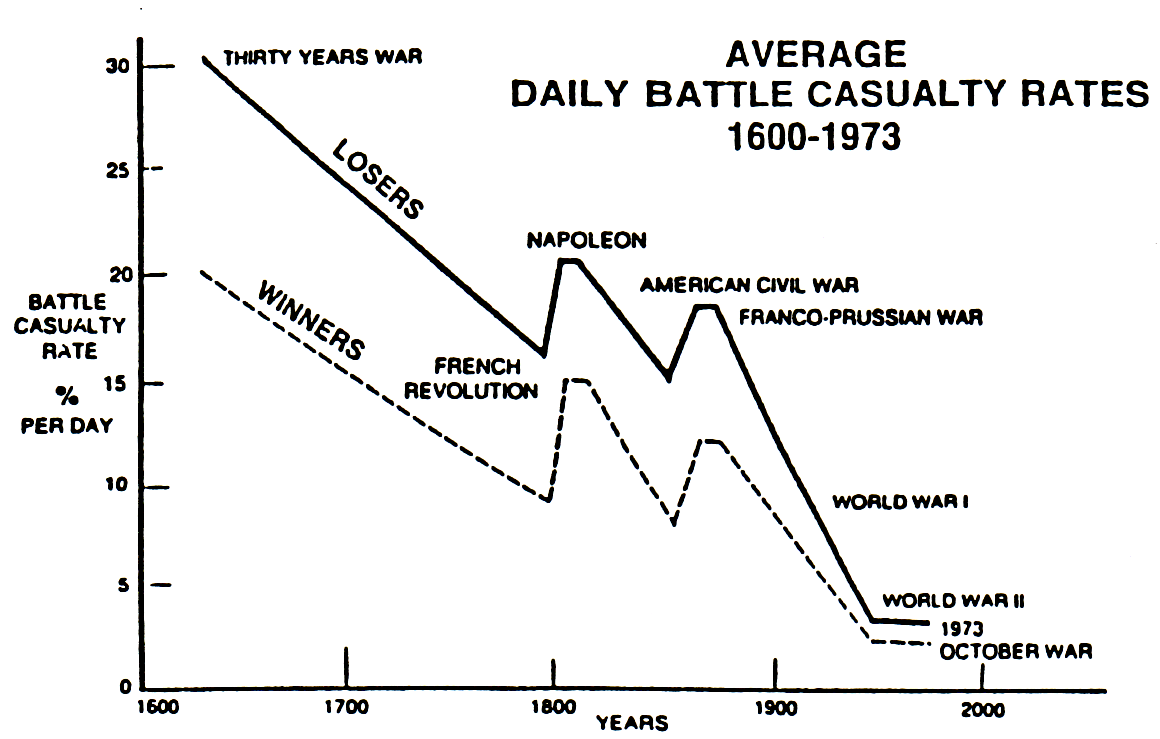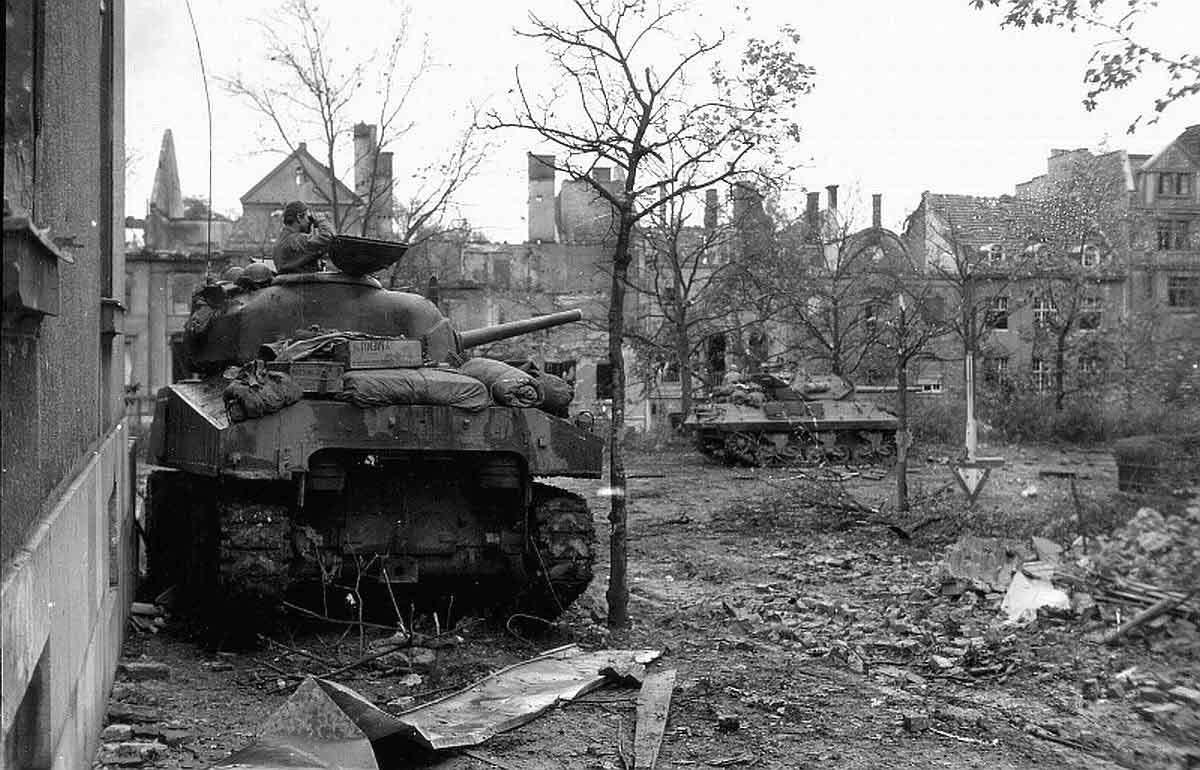This is a follow-up post to the post discussing Trevor Dupuy’s work compared to the Army Research Laboratories (ARL) current work:
The work by ARL produced a graph similar to this one by Trevor Dupuy, except it was used to forecast the “figure of regularity” (which I gather means firepower or lethality). But if you note there is another significant line on Trevor Dupuy’s graph, besides the weapons’ “theoretical killing capacity.” It is labeled Dispersion. Note the left side of the graph where it is labeled “Disperion: Square Meters per Man in Combat.” It also goes up as the “theoretical killing capacity” of the weapons goes up.

This is the other side of equation. For every action, there is an equal and opposite reaction to paraphrase a famous theorist. This results in this chart from Col. Dupuy:

Now….this is pretty damn significant….for as firepower, or lethality, or “theoretical killing capacity” has gone up, even geometrically…..daily casualty rates have declined. What is happening? Well, not only “for every action, there is an equal and opposite reaction,” but in fact, the reaction has outweighed the increase in firepower/lethality/killing capacity over time. This is worth thinking about. For as firepower has gone up, daily casualty rates have declined.
In fact, I did discuss this in my book War By Numbers (Chapter 13: The Effects of Dispersion on Combat). Clearly there was more to “dispersion” than just dispersion, and I tried to illustrate that with this chart:

To express it in simple English, people are dispersing, increasing engagement ranges and making more individual use of cover and concealment (page 166). Improvements in weapons, which occur on both sides, have also been counteracted by changes in deployment and defense. These changes have been more significant than the increases in lethality. See pages 166-169 of War by Numbers for a more complete explanation of this chart.
The issues related to lethality and forecasting the future of lethality gets a little complex and multifaceted.

 Back in 2001 we did our first report on urban warfare. It was followed by
Back in 2001 we did our first report on urban warfare. It was followed by 